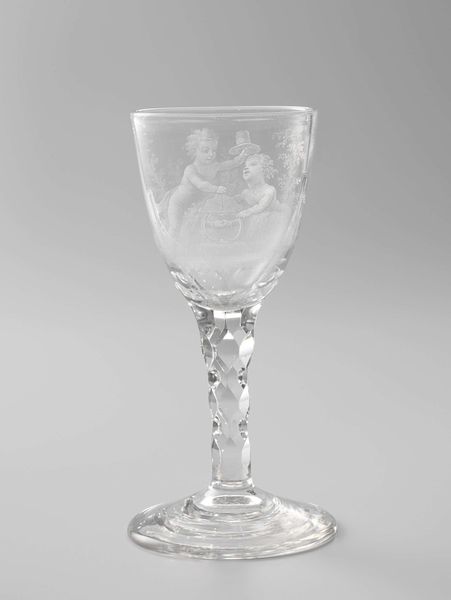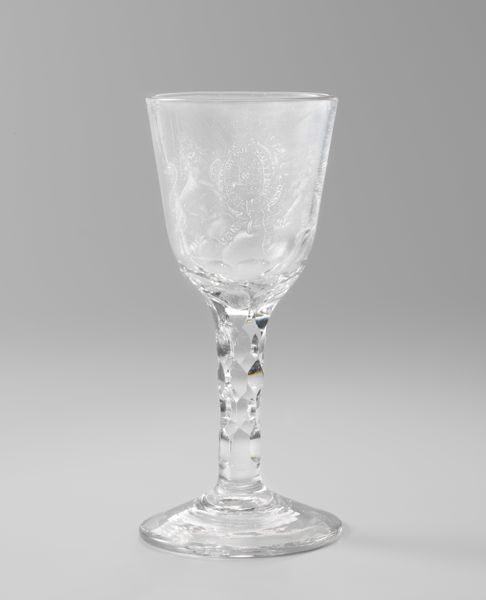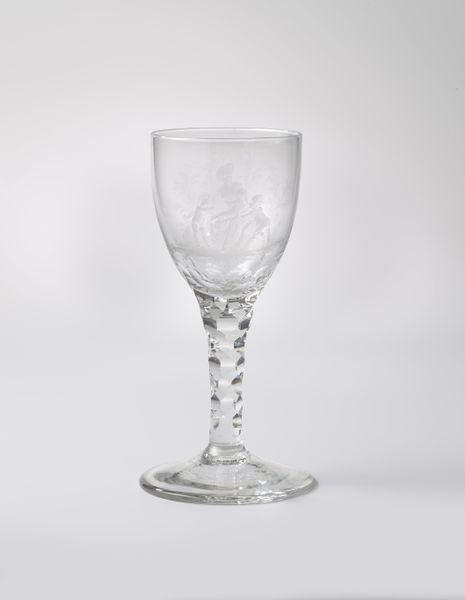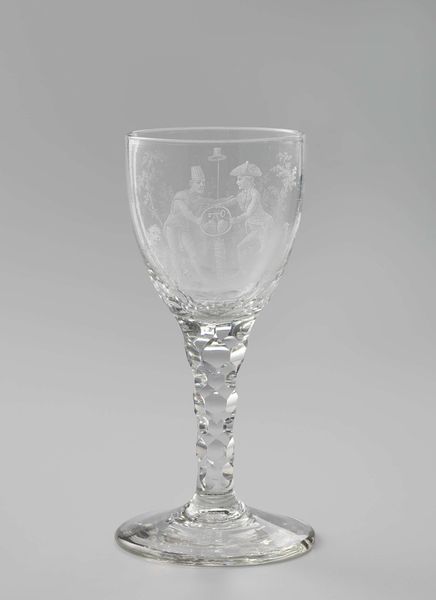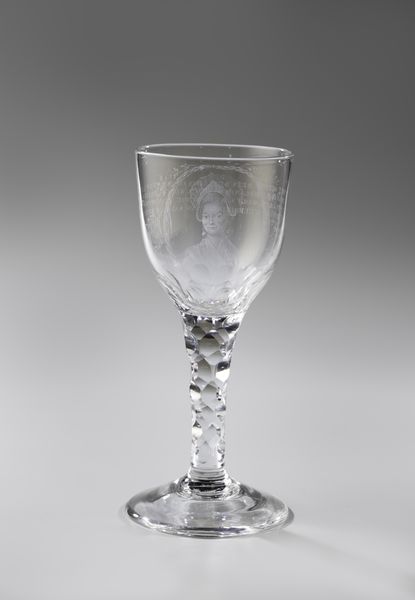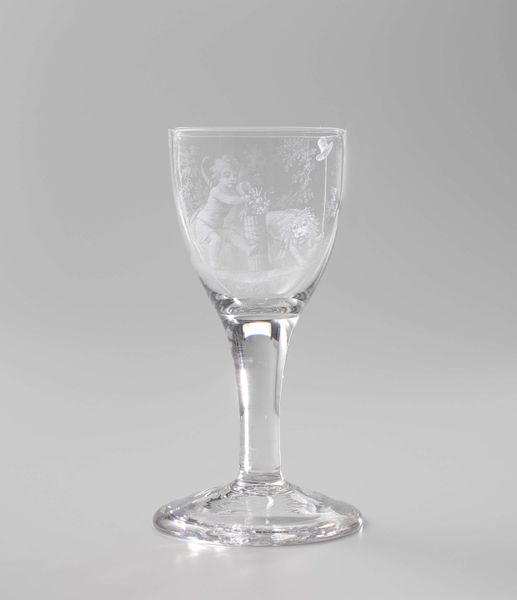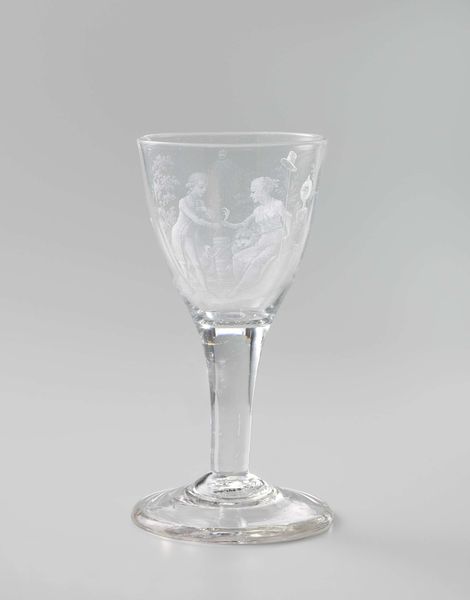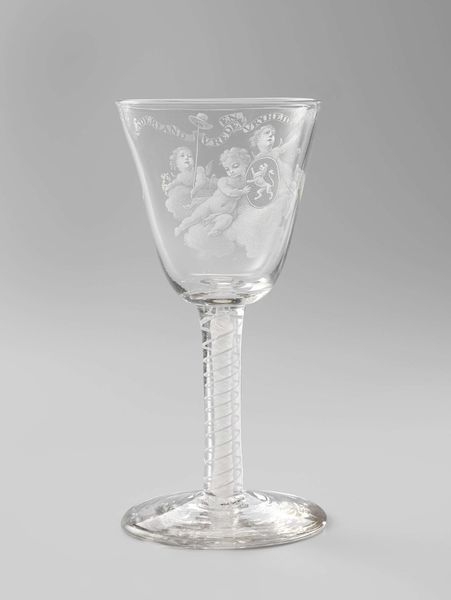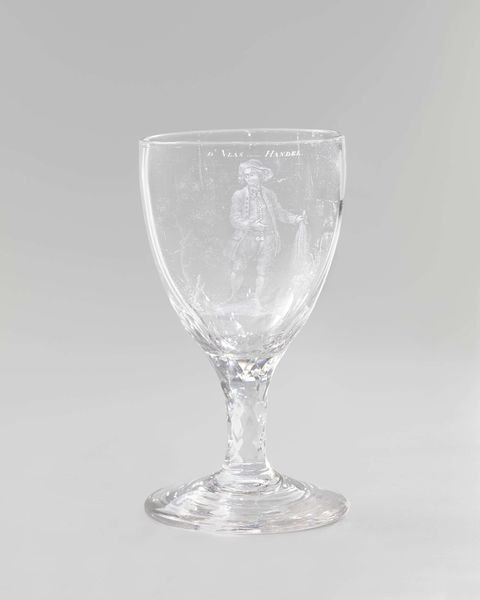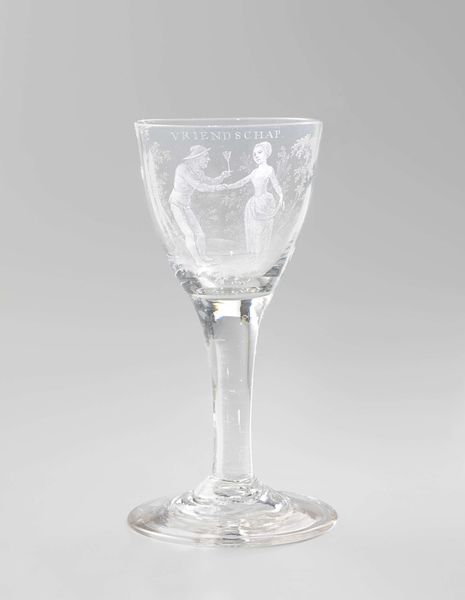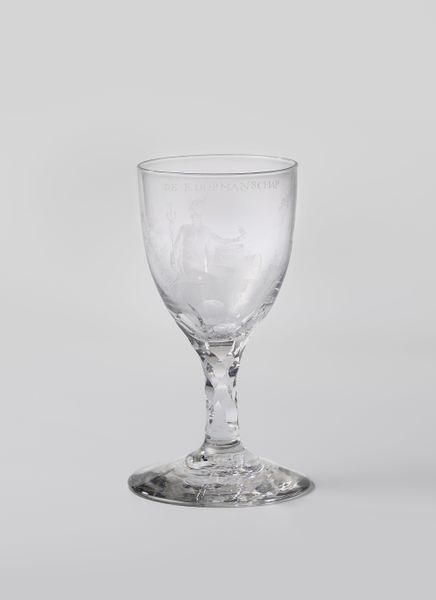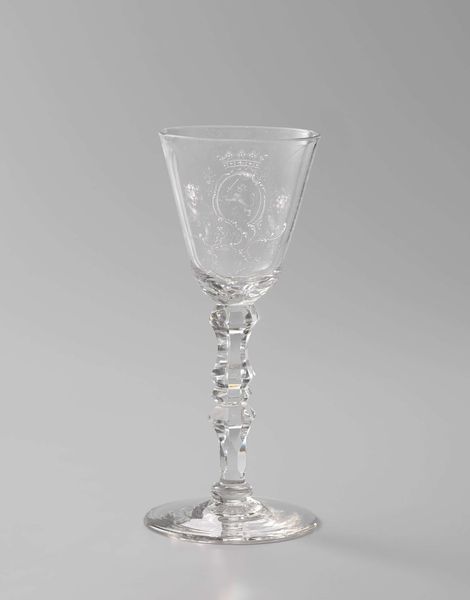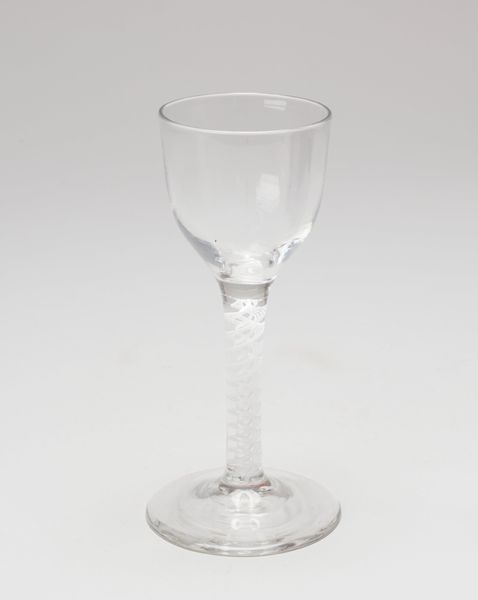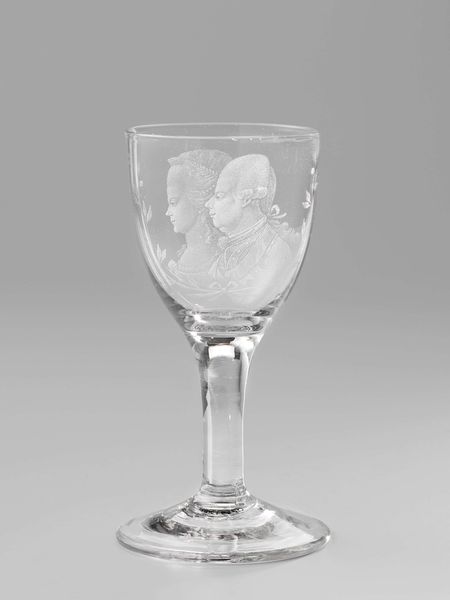
Dimensions: height 15.5 cm, diameter 8.6 cm
Copyright: Rijks Museum: Open Domain
Curator: It’s rather charming, isn’t it? Such a delicate, ephemeral feel, like holding a captured moment in light. Art Historian: Indeed. This engraved wine glass, dating roughly from 1775 to 1798, presents a snapshot into the Rococo period. Notice the scene it depicts: three music-making boys. Curator: Ah, cupids or putti, signifiers of innocent leisure and pleasure, I presume? I can't help but wonder about the socio-political context during its creation. These images were rarely straightforward portrayals of innocence, weren't they? They often danced on the edge of power dynamics within gender and class structures. Art Historian: Precisely. The Rococo era was defined by its ornate style. Courts were more open, but privilege and art went hand-in-hand. To truly appreciate it, we need to view it through that lens—consider the rise of luxurious objects aimed at exclusive circles as societal structures were both celebrated and beginning to be challenged. Curator: Right, consider what such a piece represents. Ownership. The resources involved, especially when many faced economic and political hardship. It underscores inequality. Did the imagery and the text included have other layers of messaging tied to power, status, gender, etc? What type of narrative might be communicated while drinking from it during gatherings? Art Historian: A fascinating question. Consumption and display were intertwined. This wasn't just a glass; it was a conversation piece. Did its user enjoy reflecting on genre paintings and the rising status of scenes that showcase everyday life? Did they engage in discussion of love and lighthearted themes suggested by cherubs with musical instruments? What statements were being signaled to company about one’s interests, artistic sensibility, or access? Curator: Food for thought…or maybe drink for thought? It urges one to delve more into societal complexities and how such intricate crafts have meaning within larger contexts, more than surface decoration. Art Historian: I concur. Examining art as a function of society and social aspiration transforms it from decoration to vital historic documents.
Comments
rijksmuseum about 2 years ago
⋮
Engraver David Wolff specialized in representations of themes such as friendship, freedom or – in this case – harmony. His glasses feature scenes of boys dancing, playing or making music. Because Wolff used little contrast in his work, it was sometimes difficult to read his highly sophisticated scenes. However, they became clear as soon as the glass was filled with red wine.
Join the conversation
Join millions of artists and users on Artera today and experience the ultimate creative platform.
